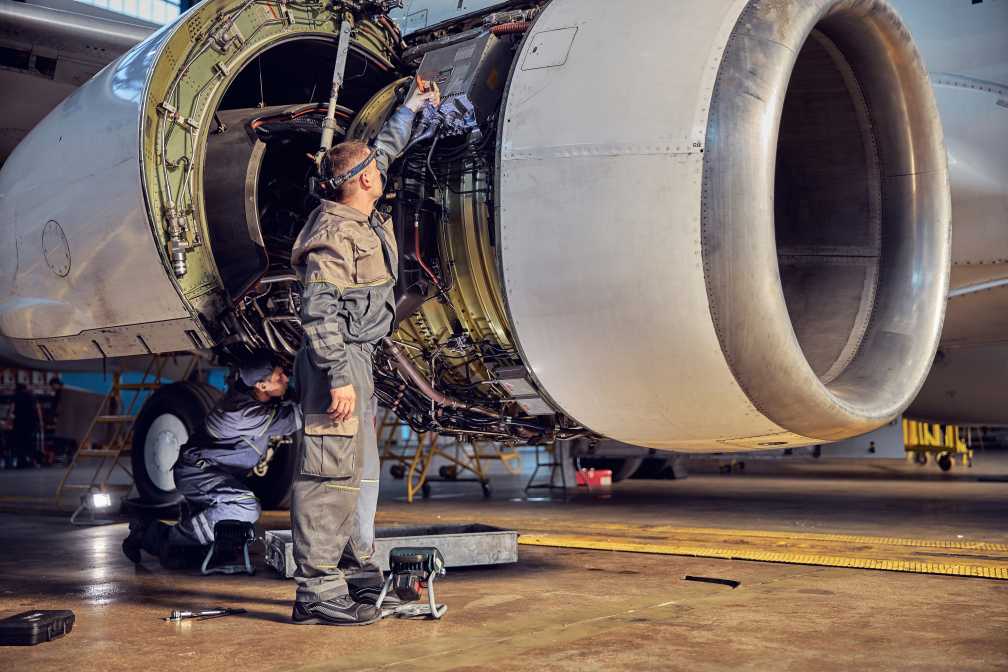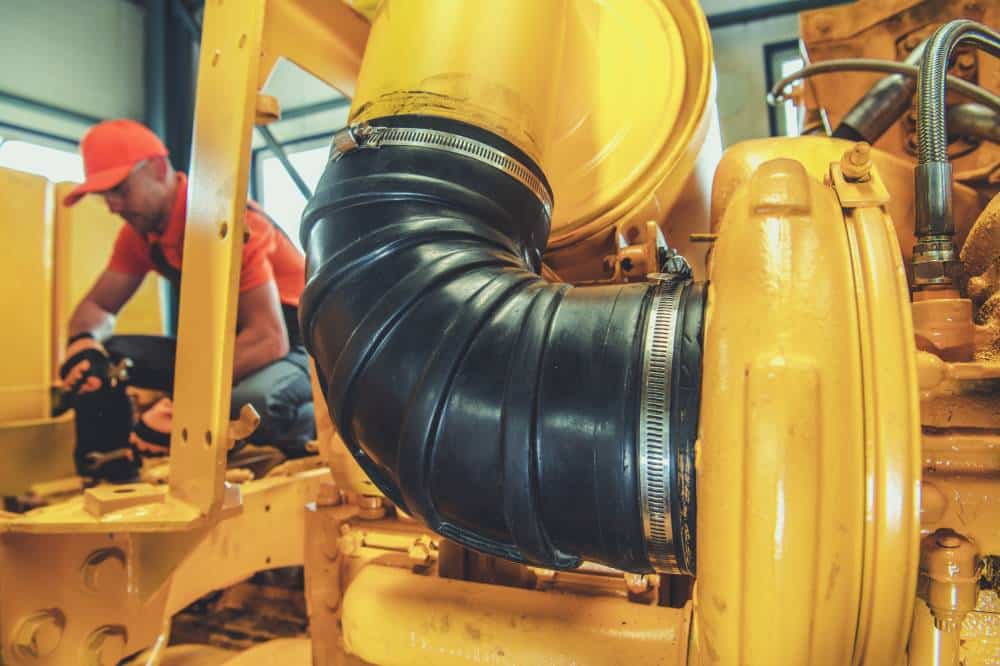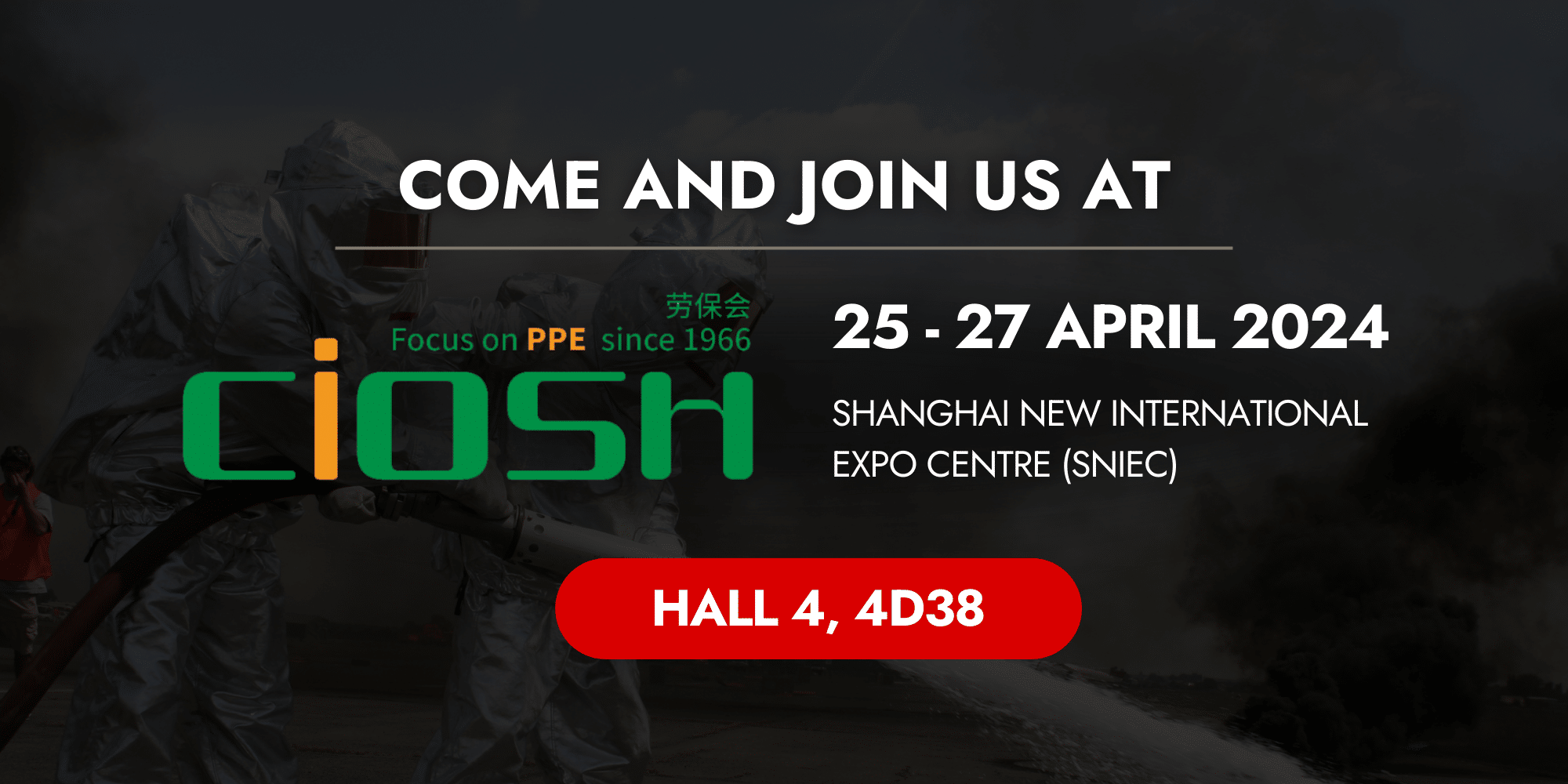When it comes to the aviation industry, every component must be designed and chosen with…
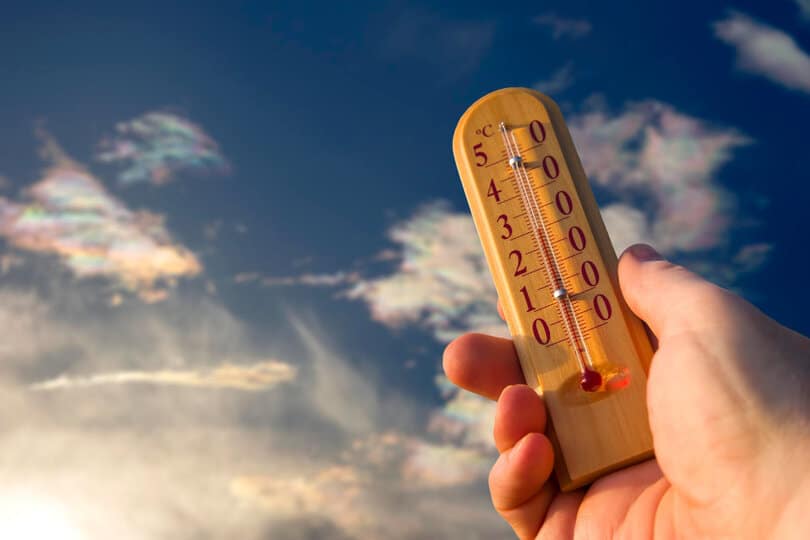
Different Types Of Heat – Hazards In The Work Environment
Occupational health and safety is a critical concern in any work environment. In some cases, particular hazards can present a danger to employees. One such hazard is heat caused by electromagnetic radiation. This blog post will explore different types of heat and their associated risks, along with measures to reduce the potential hazards heat can bring to assets and people.
Different Types of Heat
When it comes to heat energy, there are three main types you might encounter in the workplace: radiant (thermal radiation), convective, and conductive. Here’s a quick rundown of each type of heat and how to deal with them.
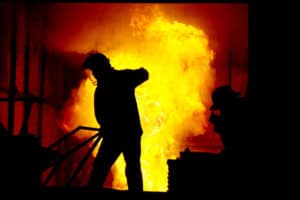
Fig. 1. Convective heat is a type of heat that can potentially damage assets
(Source: Freepik)
Radiant Heat
Radiant heat is caused by infrared radiation. This type of energy is invisible to the human eye as it travels in waves at varying frequencies. Radiant heat can come from the sun, from flames, or from hot surfaces like ovens or industrial furnaces.
In art galleries and storage facilities, radiant heat can come from natural sunlight or artificial lighting fixtures. It is important to control the level of radiant heat in order to maintain optimal temperature conditions for artwork collections.
Risks Involved
In the workplace, radiant heat can be a hazard to the collection if they are exposed to flames or hot surfaces without proper protection. Here’s a look at why this is the case:
Infrared radiation damages artwork because it penetrates the paint layer and causes the colours to fade over time. This can reduce the value of an artwork significantly if not addressed quickly. In addition, if an artwork is framed with wood or glass materials, these materials will expand and contract with changes in temperature caused by radiant heat sources like radiators or fireplaces. This expansion and contraction will damage any paper-based media such as prints or photographs over time.
In the occurrence of fire, radiant heat is the type that causes extensive damage to artwork. Before the point when the fire touches the artwork, it would have already been pretty much destroyed by radiant heat. Getting in contact with fire will be just like the final touch where the art collection will be irrecoverable.
Other sources of damage on artwork in case of fire are water and soot. Moisture and abrasion can cause irreparable damage to artwork and similar collections, so it’s best to shield them from these potential hazards.
Convective Heat
This type of heat is caused by the movement of hot air or fluid past an object. In the workplace, convective heat hazards might include exposure to hot liquids (like molten metal), steam, or hot gases. Employees who work in foundries, boiler rooms, or other high-heat areas are especially at risk for convective heat hazards.
Risks Involved
Convective heat can also be dangerous. When fluids or gases are heated up, they expand. This can cause problems in an industrial setting where there are machines with moving parts. If the parts get too hot, they can expand and cause the machine to malfunction or even break down completely.
Convective heat can also start fires. If a hot fluid or gas ignites, the fire will spread quickly through the surrounding air, thanks to convection. This is why it’s so important to be careful when using fire in an industrial setting.
In terms of inventory, items that are sensitive to heat can be warped or distorted by exposure to the temperature difference caused by convective heat. For example, books can become unbound, electronics can suffer internal damage, and food can spoil. If you have any items in your business that are sensitive to heat, it’s important to take steps to protect them during a heat wave.
Convective heat can also decrease employee productivity. When the air is filled with hot air, it’s harder for people to breathe, the body temperature rises, and they may start to feel lightheaded or dizzy. Prolonged exposure to warm air can lead to serious health problems like dehydration, heat exhaustion, and heat stroke. As an employer, it’s your responsibility to make sure your employees are safe during a heat wave. This may mean rescheduling shifts so that people aren’t working during the hottest part of the day, installing HVAC units to lower temperature, or providing breaks so that employees can stay hydrated.
Convective heat can also cause damage to equipment. When hot air circulated by fans comes into contact with sensitive electronic components, it can cause them to overheat and malfunction. In some cases, this type of heat damage can be irreparable, which means that expensive equipment will need to be replaced.
Conductive Heat

Fig. 2. Conductive heat can cause injuries to unaware employees
(Source: Freepik)
This type of heat is caused by transferring heat through solid objects. Conductive heat hazards might include exposure to hot surfaces like pipes or radiators. Employees who work in boiler rooms or other high-heat areas are especially at risk for conductive heat hazards.
Risks Involved
Conductive heat is deadly to factory machines because it causes parts to expand at different rates. This uneven expansion leads to stress on the materials, which can cause cracks, breakage, and even complete failure. In addition, when parts expand at different rates, they rub against each other, which creates friction and generates heat, exacerbating the problem.
The danger of conductive heat is especially acute in factories because of the close proximity of the machines. If one machine starts to overheat, the heat transferred can damage nearby machines as well. This can lead to a domino effect that takes out an entire line of machines, shutting down your factory for days or even weeks.
Conductive heat can also pose a safety hazard to workers in the vicinity. For example, if hot metal objects are left within reach, workers might accidentally burn themselves. In extreme cases, conductive heat might even start a fire that puts workers at risk of injury or death.
If there’s enough heat and flammable materials present, heat conduction can cause fires. These fires can spread quickly and be difficult to control. In some cases, they might even lead to explosions.
How to Reduce Hazards Caused by Heat
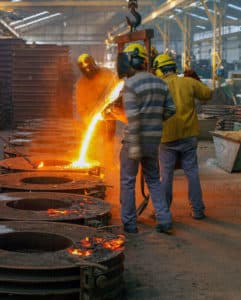
Fig. 3. Protect assets from heat hazards by using barriers and implementing safe work practices
(Source: Freepik)
- Use heat barriers
Barriers are one of the most effective ways to reduce the hazards of heat. Barriers reflect or absorb heat, reducing the amount of heat that reaches the workspace. Barriers can be made of brick, concrete, metal, or glass. Barriers should be placed between the source of heat and the asset.
There are many materials that can be used to reflect or absorb heat. These materials include water, ice, sand, clay, stone, and cement. Water is one of the most effective materials for reflecting or absorbing radiant heat. When water is heated, it evaporates and cools the air around it. This can help to keep temperatures in the workspace cool and comfortable. Sand, clay, stone, and cement are good absorbers of radiation and can help to keep temperatures in the workspace cool as well.
Aluminium is one of the most efficient metals for reflecting infrared energy and can be coated onto surfaces such as walls and ceilings. It has a low thermal conductivity, meaning that it reflects much of the infrared radiation from sunlight or flames rather than absorbing it like other metals do. As a result, aluminium helps reduce hazards associated with high temperatures in artwork displays.
Technical fabrics like those manufactured by OTEGO can also be used to protect assets from different types of heat. We use heat-resistant fabrics to ensure your assets remain operational and also protected from external damages.
- Install proper ventilation
One of the best ways to reduce the hazards of convective heat is to install local exhaust ventilation (LEV) systems. LEV systems work by capturing and removing heated fumes and vapours at the source before they have a chance to disperse throughout the workspace. This helps to keep both employees and workspaces safe from harmful exposure to heat.
Ventilation removes heated air from the workspace and replaces it with cold air from outside. Ventilation can be natural or mechanical. Natural ventilation relies on opening doors and windows to create airflow through the workspace. Mechanical ventilation uses fans and ductwork to force air through the workspace. Ventilation should be used in conjunction with other methods of reducing hazards from heat for best results.
- Provide Adequate Personal Protective Equipment
Another key way to reduce the hazards of heat is to provide employees with adequate personal protective equipment (PPE). This includes items like gloves, aprons, face shields, and respirators—depending on the specific hazards present in your workplace. By outfitting employees with the proper PPE, you can help to ensure their safety when working in areas where heat is present.
- Use Machine Guards
If your business uses any type of machinery that generates heat, it’s important to use machine guards to protect employees from harm. Machine guards help to shield employees from exposure to moving parts and dangerous temperatures, reducing the risk of serious injury in the workplace.
- Implement Safe Work Practices
In addition to using machine guards, it’s also important to implement safe work practices when working with machinery that generates heat. Some safe work practices that can help reduce the hazards posed by heat include wearing appropriate PPE, using safe lifting techniques, and being aware of fire risks (i.e., keeping combustible materials away from sources of heat).
- Educate Your Employees
Finally, it’s important to educate your employees about the dangers of heat and how best to avoid them. Make sure all employees are aware of potential hazard sources in the workplace and provide them with training on how to safely work in areas where heat is present. By educating your employees on the dangers of heat, you can help create a safer workplace for everyone involved.
OTEGO – Protecting People and Equipment from Heat Hazards
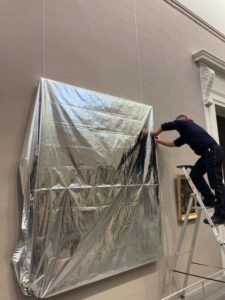
Fig. 4. The OTEGO Fireguard
OTEGO is a cutting edge company that specialises in coating and laminating technologies. We have expanded to more than 110 countries around the globe, counting local representatives across 5 continents!
The OTEGO Fireguard is a uniquely designed cover for assets made to protect them from fire, heat, and water. The special fabric material used in this product provides an additional layer of protection against dust and dirt particles as well.
The Fireguard is the recommended product for protecting artwork against fire. It is very effective in protecting against radiant heat (C4 classification to ISO 11612), thanks to its metalized layer. It is fully waterproof, so it can also protect artwork from sprinkler systems, water mist and hose water in case of fire.
If you’re interested in our technical fabrics for protecting works of art against different types of heat, feel free to contact us.
